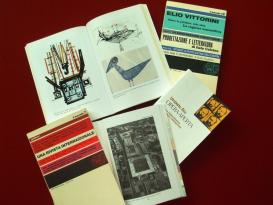After the liberation from Fascism and the end of Second World War, Italy put many efforts in the reconstruction of the country based on industrial development, despite the initial skepticism of the American administration. Cultural projects supporting or at least addressing such a strategy often took the shape of journals that discussed technology and scientific knowledge besides literature and the arts. Overcoming traditional boundaries between art, the humanities, and science, this surprising blend seemed to manifest a holistic will of renewal; an intellectual and artistic claim to interpret and even influence economic developments; an effort to aestheticize profane aspects of life.
The state-owned holding IRI (Institute for the Industrial Reconstruction) and the private publishing house Giulio Einaudi Editore offer excellent opportunities for studying this topic. The journals Il Politecnico (1945-1947) and Il menabò (1959-1967), published by Einaudi and edited by Elio Vittorini, made the readers aware of technology’s economic and political settings, of its benefits and risks. They engaged with technology from a political and poetic perspective, promoting a unique kind of popularization based on innovative graphic design and literary language.
Civiltà delle Macchine (1953-1979) was founded in 1953 as in-house organ of Finmeccanica, a IRI subsidiary that financed and managed the public companies of the mechanical industry. The journal showcased the industrial potentialities of the country, next to its artistic and intellectual strengths. The first editor of the bimonthly review was Leonardo Sinisgalli, a poet, mathematician, and engineer by training. His successful public relations strategy for Finmeccanica consisted in building an international tribune, positioning Italy well inside the Western landscape. Some of the political aspects of this cultural, educational, and artistic enterprise can be traced back to the fascist period, and forth to Cold War and the foundation of the European Union. From 1958 on, the new editor Francesco Flores d’Arcais, a journalist and mathematician by training, strengthened international collaborations and transformed Civiltà delle Macchine more and more into a scholarly journal for the history of science and technology, while continuing to present contemporary artists. Flores d’Arcais understood culture in a comprehensive manner that includes “the physician, the lawyer, the engineer, the technician, the scientist” as cultural agents (Civiltà delle Macchine, 9, 1, 1961, 2).

